Plants give us so much of what we need to survive and thrive. For a long time, it’s been understood that many plant species house a large and diverse supply of omega fatty acids. The research world and most of the consuming public know how important omegas are to our health, but a refined and specific knowledge about which plant-based omega sources suit different needs still eludes many. There are also useful details about extraction, delivery options and recent developments within this category for retailers to familiarize themselves with, so let’s get started.
Comparing Sources
Customers perusing your plant-based omega offerings likely face two conundrums. First, what to make of the various sources available: Chia? Flax? Borage? Supposing they pick one, they then have to wrangle with the numbers and names on the nutrition panel: LA (linoleic acid)? ALA (alpha-linolenic acid)? GLA (gamma-linolenic acid)? And, how many milligrams is enough? Each source has distinct qualities (and that’s before even considering delivery format, which we’ll tackle later) and several are commonly linked with somewhat different health benefits. We’ll go over some of the highlights here.
Different plant species are composed of 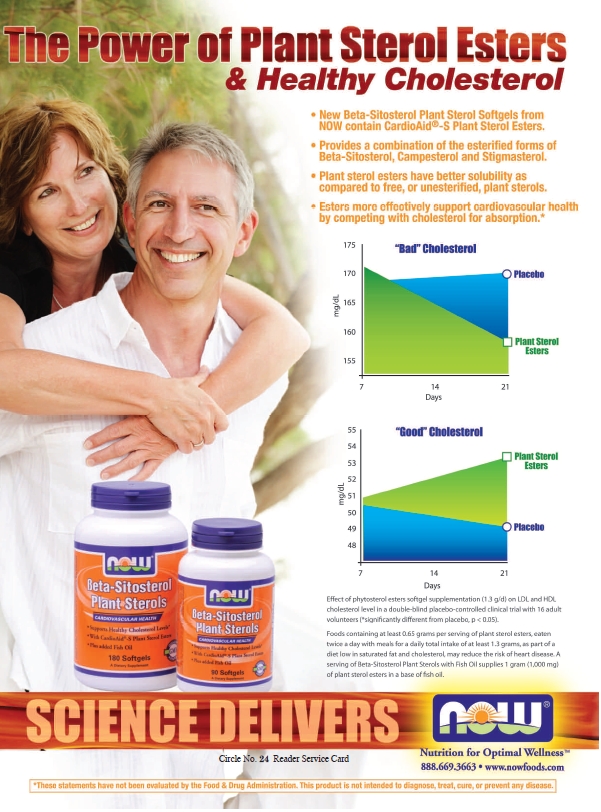 different types of molecules, a trait they share with all living things, points out Trisha Sugarek MacDonald, B.S., M.S., director of R&D/national educator for Bluebonnet Nutrition Corporation, Sugar Land, TX. And while there is significant overlap in omega fatty acid content, the ratios between them are often quite different from plant to plant. All the better for our own health, and for choosy consumers. “There are a variety of different vegetable oils available on the market for human consumption and their fatty acid compositions all vary,” Sugarek MacDonald says.
different types of molecules, a trait they share with all living things, points out Trisha Sugarek MacDonald, B.S., M.S., director of R&D/national educator for Bluebonnet Nutrition Corporation, Sugar Land, TX. And while there is significant overlap in omega fatty acid content, the ratios between them are often quite different from plant to plant. All the better for our own health, and for choosy consumers. “There are a variety of different vegetable oils available on the market for human consumption and their fatty acid compositions all vary,” Sugarek MacDonald says.
Soybean oil, she says, contains about 50% LA, which is an omega-3. Sunflower oil is also high in LA at about 66%, though high oleic acid sunflower oil, composed of about 83% oleic acid, can also be found on the market. Olive oil is also high in oleic acid, an omega-9, while borage and peanut oils contain small amounts of erucic acid, another omega-9.
Herb Joiner-Bey, N.D., scientific advisor to Barlean’s, Ferndale, WA, also offers some specific figures for key plant-based omega sources. Flaxseed oil is high in ALA, an omega-3, at 58% of its overall content. It also contains significant amounts of linoleic and oleic acid. Borage oil typically holds sizable amounts of GLA, an omega-6, and oleic acid, but its dominant constituent is LA at 35%. Evening primrose oil (EPO) is a highly potent source of LA, according to Joiner-Bey, where it comprises 72% of the total oil.
These pieces of information are nice to have, and our experts will continue to offer them, but they don’t mean much unless they’re coupled with an understanding of the health implications of these fatty acids. We’ll start with a refresher on undoubtedly the two best-known omega-3s, DHA and EPA. “Interestingly, many people believe that fish are the original sources of DHA and EPA, but in fact it’s the microalgae in their food chain that makes them a good source of these important fatty acids,” says Jill Porter, senior marketing manager for DSM Nutritional Products, Parsippany, NJ.
Porter reminds us that DHA, a long-chain omega-3 fatty acid, is by far the most abundant omega-3 in brain and retina tissues. EPA, another long-chain omega-3, is more associated with cardiovascular health. ALA, known as an essential fatty acid (EFA) because it cannot be synthesized, is a short-chain omega-3 that provides energy and is linked with healthy skin.
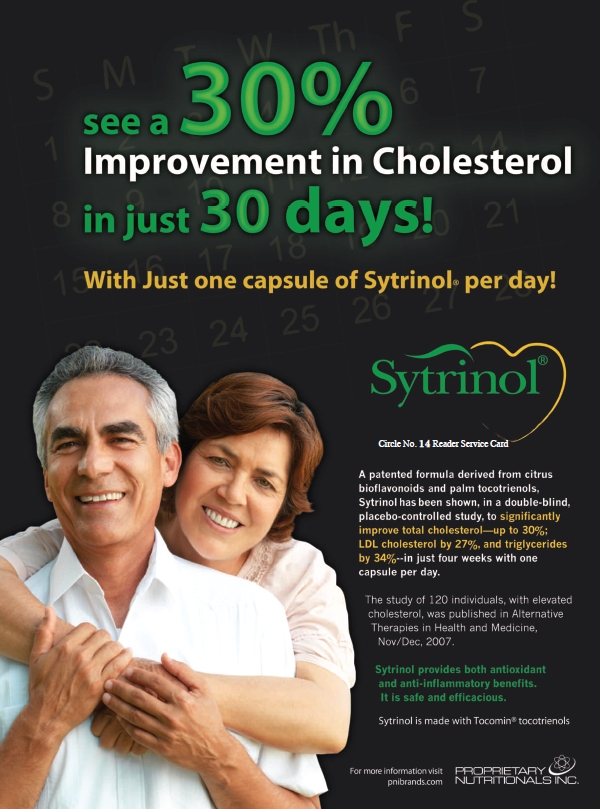 “ALA, which can be found in some nuts as well as plant oils, such as canola oil, is a simple omega-3 fatty acid and can serve as a precursor for the biologically more relevant omega-3s EPA and DHA,” says Matthias Ruessing, global business manager for Allendale, NJ-based Lonza’s DHAid ingredient. The degree to which it is converted for this purpose is debatable. “Research indicates that ALA is not converted efficiently to DHA and EPA,” Porter says, and evidence shows that DHA may be converted even less efficiently than EPA (1). A recent study with rats suggested that this conversion process may be optimized by diets low in polyunsaturated fatty acids (PUFAs), a class which contains the omega fatty acids (2). So, it may be that the less omega-3s and omega-6s one consumes, the more readily ALA is converted into other healthy compounds including DHA. Conversion, however, varies with age, gender, overall health and other factors.
“ALA, which can be found in some nuts as well as plant oils, such as canola oil, is a simple omega-3 fatty acid and can serve as a precursor for the biologically more relevant omega-3s EPA and DHA,” says Matthias Ruessing, global business manager for Allendale, NJ-based Lonza’s DHAid ingredient. The degree to which it is converted for this purpose is debatable. “Research indicates that ALA is not converted efficiently to DHA and EPA,” Porter says, and evidence shows that DHA may be converted even less efficiently than EPA (1). A recent study with rats suggested that this conversion process may be optimized by diets low in polyunsaturated fatty acids (PUFAs), a class which contains the omega fatty acids (2). So, it may be that the less omega-3s and omega-6s one consumes, the more readily ALA is converted into other healthy compounds including DHA. Conversion, however, varies with age, gender, overall health and other factors.
A common theme when dealing in plant-based omega sources and supplements, as opposed to their fish and marine-derived counterparts, involves the ratio of omega-3s to omega-6s. This is due to the large debate about the importance of this ratio to overall health, and the fact that many plant-based oils present comparable amounts of omega-6s and omega-3s. Flax may be popular in part for this reason, says Alberto Trujillo, national education manager for Flora Health, Lynden, WA. Its large amount of ALA gives it a 4:1 ratio of omega-3 to omega-6.
Chia contains both omega-3 ALA and omega-6 LA, notes John Foss, farmer and founder/CEO of The Chia Co., Leederville, WA, Australia. He states, “Chia is unique in that it naturally contains 20% omega-3 ALA and 7% omega-6 LA, in a 3:1 ratio, which is considered the perfect ratio for health.”
Trujillo admits that “America needs an oil change,” meaning that our diets do need to shift away from the fried, refined fats and oils that dominate currently (including hydrogenated oils and trans-fats), toward unrefined, organic mono- and polyunsaturated oils high in omega fatty acids. But he thinks that the emphasis placed on optimum omega fatty acid ratios may lead consumers down the wrong path. Both omega-3 ALA and omega-6 LA are essential, meaning they must be obtained through diet. “The American Heart Association and ISSFAL (International Society for the Study of Fatty Acids and Lipids) recommend 12 g to 22 g of LA omega-6 a day for good cardiovascular health,” Trujillo says.
So, the idea that omega-3s must far 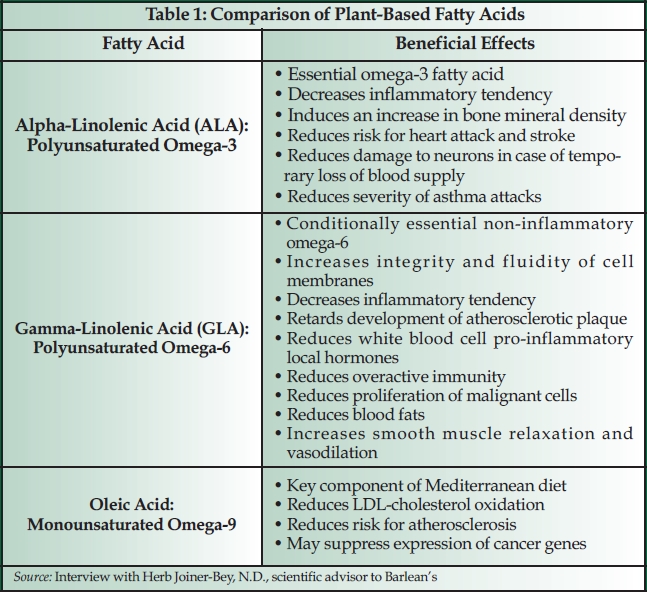 outweigh omega-6s may leave some cutting off their nose to spite their face. “The reality is that we don’t eat enough omega-3 ALA and we need to increase our dietary consumption to bridge the gap instead of decreasing our omega-6 consumption,” Trujillo says, noting that this may simply make us deficient in both areas.
outweigh omega-6s may leave some cutting off their nose to spite their face. “The reality is that we don’t eat enough omega-3 ALA and we need to increase our dietary consumption to bridge the gap instead of decreasing our omega-6 consumption,” Trujillo says, noting that this may simply make us deficient in both areas.
It is important to note that the U.S. Department of Agriculture cites the adequate intake values for ALA at 1.1 g daily for adult women, and 1.6 g for adult men, says Sandra Gillot, CEO of Functional Products Trading SA, Santiago, Chile, maker of Benexia chia, exclusively sold and marketed by Kearny, NJ-based Proprietary Nutritionals Inc. (3). She emphasizes chia as an important source, stating, “Chia seed products have been introduced to the market at an increasing pace and in variety. Both chia seed and oil have a pleasant walnut-like flavor, high nutrient availability with high ALA fatty acid content, and oxidative stability.” Gillot notes that one 1000 mg capsule of chia can deliver up to 630 mg of ALA. She also suggests looking at several less common plant-based omega sources such as sacha inchi oil and perilla oil to obtain ALA and other omegas.
The overall health implications of ALA go beyond skin health. “Plant-based omega 3 ALA is important for a healthy heart and research has shown it can be beneficial for lowering cholesterol, maintaining artery function and reducing the risk of cardiovascular disease,” says Foss.
The omega-6 GLA can be obtained from borage oil, among other sources. EPO and blackcurrant also provide some GLA, according to Brandon Nomura, territory manager for Soft Gel Technologies, Los Angeles, CA. “Of these sources, borage contains the highest percentage of GLA, at around 20%. This is about two times higher than EPO, though EPO is the more well-known source,” he says. Trujillo estimates that nine out of 10 research studies on GLA have involved EPO. GLA has been reviewed for everything from anti-tumor to anti-inflammatory properties. “GLA is a precursor for prostaglandins, action-specific bio-molecules that regulate many important functions in cells,” explains Angelica S. Vrablic, Ph.D., manager of nutrition research for Solgar Vitamin and Herb, Leonia, NJ.
“A product indicated for improved circulation, blood pressure support and reduced inflammation might contain higher concentrations of GLA omega-6 from EPO and EPA omega-3 from algae,” says Trujillo. This is because both GLA and EPA are precursors to prostaglandins series 1 and 3, he says, and these are molecules involved in vasodilatation, improved circulation and reduced inflammation.
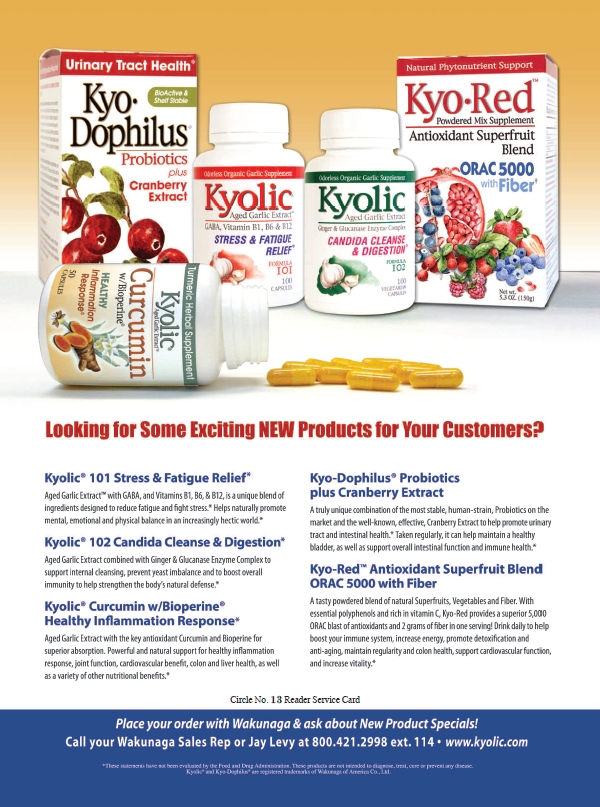 As nature intended. Though various delivery forms, from capsules to oils, all serve a purpose in delivering plant-based omegas to consumers, it’s important for customers to consider making the whole, unprocessed or powdered food a part of their diet whenever possible. “If a person is just looking for a source of essential fatty acids, it is probably easiest to go with a liquid or softgel product, as they offer the highest concentrations. However, whole food sources, such as ground flax seeds or chia seeds, offer additional benefits for those willing to supplement their diets with the powder form,” says Nomura. Components found in both flaxseeds and chia seeds, he explains, like lignans and soluble fibers, offer health benefits beyond those associated with omega fatty acids.
As nature intended. Though various delivery forms, from capsules to oils, all serve a purpose in delivering plant-based omegas to consumers, it’s important for customers to consider making the whole, unprocessed or powdered food a part of their diet whenever possible. “If a person is just looking for a source of essential fatty acids, it is probably easiest to go with a liquid or softgel product, as they offer the highest concentrations. However, whole food sources, such as ground flax seeds or chia seeds, offer additional benefits for those willing to supplement their diets with the powder form,” says Nomura. Components found in both flaxseeds and chia seeds, he explains, like lignans and soluble fibers, offer health benefits beyond those associated with omega fatty acids.
Chia, in particular, does not even need to be in powdered form for consumers to reap benefits. “Chia has no allergen issues, no anti-nutrients, and does not need to be milled before ingestion: the husk of the chia seed can be easily degraded by the pH in the gastrointestinal tract, which facilitates the bio-availability of all nutrient elements,” says Gillot. In addition, the natural oval shape of the chia seed does not allow them to break easily, providing protection for the omega-3s and omega-6s as well as preventing the oxidation of nutrients. Essentially, “The omega-3 within chia is protected by the natural encapsulation of the seed structure,” says Foss.
This all means that chia can be eaten as a whole seed, direct from the plant, the way nature intended, according to Foss. He adds, “Chia is also rich in protein, fiber, antioxidants, vitamins and minerals, essential whole food nutrition that is missing from the modern diet.” Gillot breaks it down further, saying that chia as a whole seed is composed of 40% dietetic fiber, 21% proteins, omega-3 ALA, vitamins and minerals like zinc and potassium.
From Seed to Supplement
The plant seeds have been removed from the field, shipped to the facility and the manufacturer is ready to begin making its plant-based omega product. Before plant oils can become finished products or make their way into soft gels, they must first be extracted.
Extraction. For preserving nutrients in plant-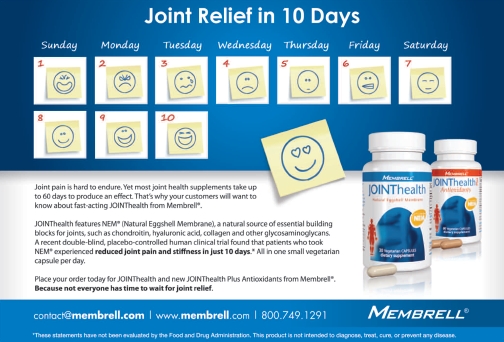 based oil products, cold expeller pressing is the name of the game. Foss says his company’s chia oil is made from Australian-grown chia seed with a special cold press technology that prevents oxidation. The milling of oleaginous seeds like flax and chia, says Gillot, is generally done under tight temperature control to protect the precious omega-3 content from degradation.
based oil products, cold expeller pressing is the name of the game. Foss says his company’s chia oil is made from Australian-grown chia seed with a special cold press technology that prevents oxidation. The milling of oleaginous seeds like flax and chia, says Gillot, is generally done under tight temperature control to protect the precious omega-3 content from degradation.
After the extraction of the crude oil from a plant source through crushing or otherwise breaking and pressing the seeds, typical steps include the separating out of other particulate material, the balancing of the oil’s acidity and other purification steps, according to Nomura.
Manufacturers have certain choices concerning exactly how to extract and separate the oil. Says Ruessing, “Most plant oils are produced by oil seed pressing. Yields can be increased by heating and/or the use of solvents.” Solvent options include hexane and food-grade alcohol, and then there is enzymatic extraction that does not involve the use of solvents, according to Trujillo. Then, he goes on, there is the choice between producing refined, bleached and deodorized (RBD) oil or leaving the oil unrefined, depending on the end product.
For long-chain omega-3s, a deodorizing step using steam can improve the product’s sensory quality, Ruessing adds. RBD oils may not have some of the plant’s sensory qualities, making them more suited to some cooking applications. Companies can also stick with non-genetically modified plants for their finished products, Trujillo notes, a choice that starts back on the farm. In addition to the use of cold temperatures, “nitrogen blankets, yellow lights, and antioxidant blends can help to maintain the stability of polyunsaturated plant-based omegas,” says Vrablic. All of these choices may impact the application, cost and marketability of the final product.
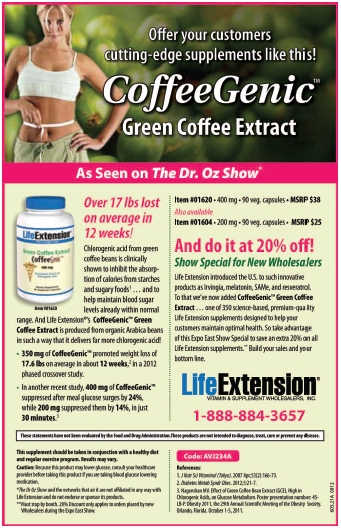 As for everything that isn’t an omega fatty acid that does or does not make it into the final product, well, that’s up to the company, too. Typically in a plant-based omega supplement, much is removed to isolate the nutritional components consumers want, says Trujillo. This includes traces of some minerals and vitamins. What remains might be saturated fat, cholesterol, omega-3s like EPA, DPA and DHA and omega-6s like LA, GLA and ALA. Often, saturated fat gets removed as well.
As for everything that isn’t an omega fatty acid that does or does not make it into the final product, well, that’s up to the company, too. Typically in a plant-based omega supplement, much is removed to isolate the nutritional components consumers want, says Trujillo. This includes traces of some minerals and vitamins. What remains might be saturated fat, cholesterol, omega-3s like EPA, DPA and DHA and omega-6s like LA, GLA and ALA. Often, saturated fat gets removed as well.
“What determines the quality of the end product is usually the quality of seeds/nuts, handling and packaging,” says Trujillo. His firm uses environmentally friendly, recyclable, pharmaceutical-grade glass and a double-nitrogen, liquid/gas-flushing system to remove the oxygen from the oil and the headspace of the bottle before sealing occurs, all to ensure freshness.
Delivery. The processes used in the early stages of manufacturing are directly tied to the final form a product will take, and different formats each have their pros and cons. As an ingredient supplier, “DSM works closely with manufacturers to help select the best possible delivery format for the specific food, beverage or supplement product,” says Porter.
For instance, “Since omegas from plant oils are fat-soluble, it is typically best to consume these nutrients in a softgel whereby the nutrient is surrounded by a lipid (fat) matrix allowing for more efficient delivery into the small intestine and subsequent absorption into the body,” says Sugarek MacDonald. She adds that in contrast, liquid and chewable plant-based omega products can offer flavor, ease of administration, improved digestibility and often increased compliance. “With a liquid or chewable formula, the amount of time it takes for this nutrient to go from the stomach to the small intestine for absorption is miniscule,” she says. For consumers choosing a powdered or capsule delivery format for omegas, she suggests combining with an oil like coconut or peanut to provide a lipid matrix for enhanced assimilation of these fat-soluble nutrients.
To acquire the same dosage levels provided by a mere 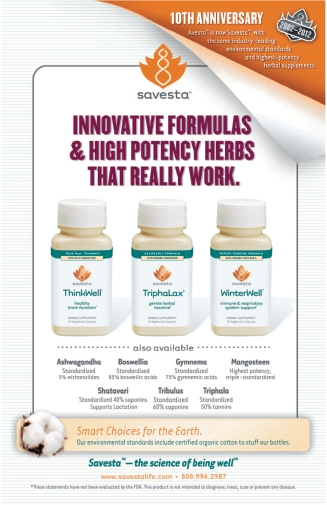 tablespoon of some oils, consumers would be faced with taking an unreasonable amount of softgels per day, notes Trujillo. “On the other hand, softgel capsules are stable because they provide a barrier between the oil and the oxygen which is an advantage over the liquid,” he says. Softgels, he adds, are also convenient for travel and for achieving therapeutic doses of some fatty acids like GLA, EPA and DHA, which are often measured in milligrams. The essential fatty acids ALA and LA, by way of comparison, are typically consumed on the order of grams.
tablespoon of some oils, consumers would be faced with taking an unreasonable amount of softgels per day, notes Trujillo. “On the other hand, softgel capsules are stable because they provide a barrier between the oil and the oxygen which is an advantage over the liquid,” he says. Softgels, he adds, are also convenient for travel and for achieving therapeutic doses of some fatty acids like GLA, EPA and DHA, which are often measured in milligrams. The essential fatty acids ALA and LA, by way of comparison, are typically consumed on the order of grams.
Individual consumer preference and need are also factors. “If the digestive system is not very efficient, there may be some challenges in dissolving the gelatin capsules in which case the liquid would be a much better choice,” says Trujillo. If liquids are preferred, he goes on, they are easy to add to a variety of foods, from salads to smoothies, so long as they are not used for high-heat cooking, which will degrade nutrients. With controlled-dose supplements, meanwhile, it is easy to increase the intake of a specific nutrient, Ruessing explains. “Powder forms are often used for special nutrition products, for example for diabetes, weight management and pregnancy,” he says.
Then there is the trend that has manufacturers including omegas in foods themselves, with no effort required by the consumer. Benjamin J. Thomas, president of Undefeated Sport, Inc., Thousand Oaks, CA, describes how his company has incorporated plant- and algal-derived omegas into its cookie products.
First, organic whole flax from ENRECO is used for its omega-3 profile, and the taste lends itself to a cookie or bar product. They also use organic buttery spread from Earth Balance for its ALA content. Finally, they include life’sDHA from DSM Nutritional Products, “a vegetarian, fish-free source of DHA derived from algae is a wonderful part of our Sport Cookies and a first in sports nutrition bars or cookies,” Thomas says. He adds that since this ingredient is taken directly from algae, it eliminates the risk of contamination associated with marine life omega sources.
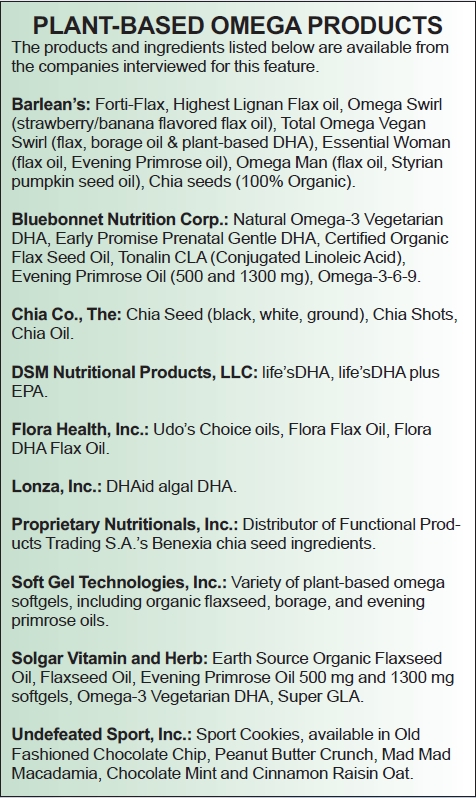 Obstacles. In a market dependent in part on widely traded commodities and sources from all over the globe, occasional problems can arise for manufacturers. “As with any crop, agricultural issues, such as drought, can reduce supplies of seeds, thereby increasing costs of raw materials and costs to consumers for finished products,” says Joiner-Bey. Foss says that his company, which produces all of its own chia in Western Australia, rarely faces any issues. With an ideal climate and continuous water available, a consistent supply of chia is achieved, without much seasonal variation.
Obstacles. In a market dependent in part on widely traded commodities and sources from all over the globe, occasional problems can arise for manufacturers. “As with any crop, agricultural issues, such as drought, can reduce supplies of seeds, thereby increasing costs of raw materials and costs to consumers for finished products,” says Joiner-Bey. Foss says that his company, which produces all of its own chia in Western Australia, rarely faces any issues. With an ideal climate and continuous water available, a consistent supply of chia is achieved, without much seasonal variation.
Beyond fluctuating availability and therefore shifting prices, product quality can also be impacted by growing conditions, according to Trujillo. Factors like temperature, moisture and mold growth can all affect the percentage of omegas in seeds. Also, potential legal and regulatory issues arise when raw ingredients are sourced from countries such as China or India. Concerns over heavy metal content, pesticides and other contaminants can all come into play when these countries are involved, Trujuillo says, noting that his company sources 80% of its flax from North America and the rest from Argentina.
Algae Awareness
Omegas derived from algae, the primary one being DHA, are a special and interesting case worth a separate look. It first helps to understand how these ingredients begin life. “DSM grows its microalgae in large, stainless-steel enclosed, U.S. Food and Drug Administration (FDA)-inspected fermentation tanks in the United States,” says Porter. Going into detail about the ingredient, Sugarek MacDonald notes that these fermentation tanks range in size from 80,000 to 260,000 liters. “When grown, the microalgae is then harvested and processed to extract the clear, amber-colored oil rich in DHA,” she says.
Several methods exist for this extraction process, including molecular distillation and CO2 extraction, according to Vrablic. She adds that small amounts of other nutrients including other omegas can also be produced by the algae. These can either be used in the end product or removed. Lonza’s DHAid ingredient also consists of a proprietary strain of microalgae produced through a controlled fermentation process, according to Ruessing. The algae strain used in this ingredient can consist of more than 50% DHA, so no further processing is required to concentrate the dosage.
The omegas in both of these 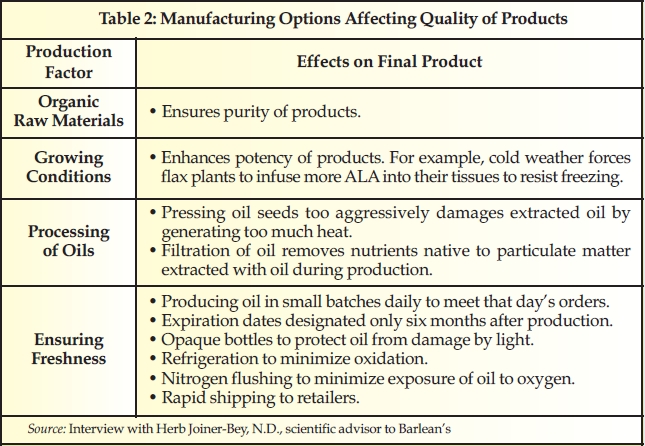 ingredients are bound with a similar biochemical structure as that of other omega sources. “It’s a pure triglyceride, very similar to fish oils,” Ruessing says. life’sDHA is also constituted in a natural triglyceride form, as opposed to the synthetic ethyl ester form commonly seen, which, according to Sugarek MacDonald, can become oxidized and rancid.
ingredients are bound with a similar biochemical structure as that of other omega sources. “It’s a pure triglyceride, very similar to fish oils,” Ruessing says. life’sDHA is also constituted in a natural triglyceride form, as opposed to the synthetic ethyl ester form commonly seen, which, according to Sugarek MacDonald, can become oxidized and rancid.
Customers may wonder if getting their omegas from a source like algae will affect their health differently. “The biochemistry of the omega nutrient is not altered due to its source,” reassures Sugarek MacDonald. EPA is EPA, whether it comes from algae or fish, and the body utilizes it in the same way regardless. In fact, assimilation in some cases can even rival whole food sources. “A study led by Linda Arterburn and presented at the 2002 ISSFAL conference showed that consuming 600 mg of algal DHA (life’sDHA) or fish (salmon) resulted in similar increases in plasma phospholipid and RBC DHA levels following a two week supplementation period,” Porter notes.
Summarizing the advantages of algal omegas, Joiner-Bey includes the fact that they are vegan sources, and can therefore be used by all consumers. They are also a sustainable source that is free of ocean pollutants. They are made from start to finish in manufacturing facilities inspected by agencies including FDA, enabling suppliers to produce ingredients under close supervision, while following Good Manufacturing Practices. “FDA inspections have certified the best manufacturers’ products as being worthy of inclusion as ingredients in baby formulas,” Joiner-Bey says. WF
References
1. H. Gerster, “Can adults adequately convert alpha-linolenic acid (18:3n-3) to eicosapentaenoic acid (20:5n-3) and docosahexaenoic acid (22:6n-3)?” Int J Vitam Nutr Res. 68(3), 159–73 (1998).
2. R.A. Gibson, et al., “Docosahexaenoic acid synthesis from alpha-linolenic acid is inhibited by diets high in polyunsaturated fatty acids,” Prostaglandins Leukot Essent Fatty Acids. Epub. ahead of print Apr 17 2012.
3. “DRI Tables,” United States Department of Agriculture, http://fnic.nal.usda.gov/dietary-guidance/dietary-reference-intakes/dri-tables, accessed on Aug. 31, 2012.
Published in WholeFoods Magazine, October 2012









